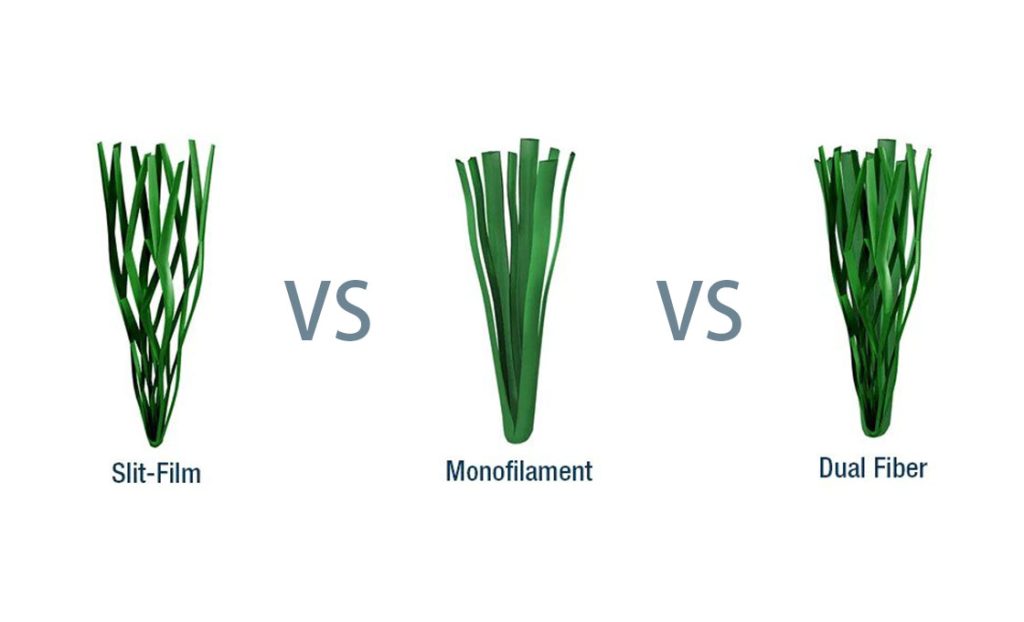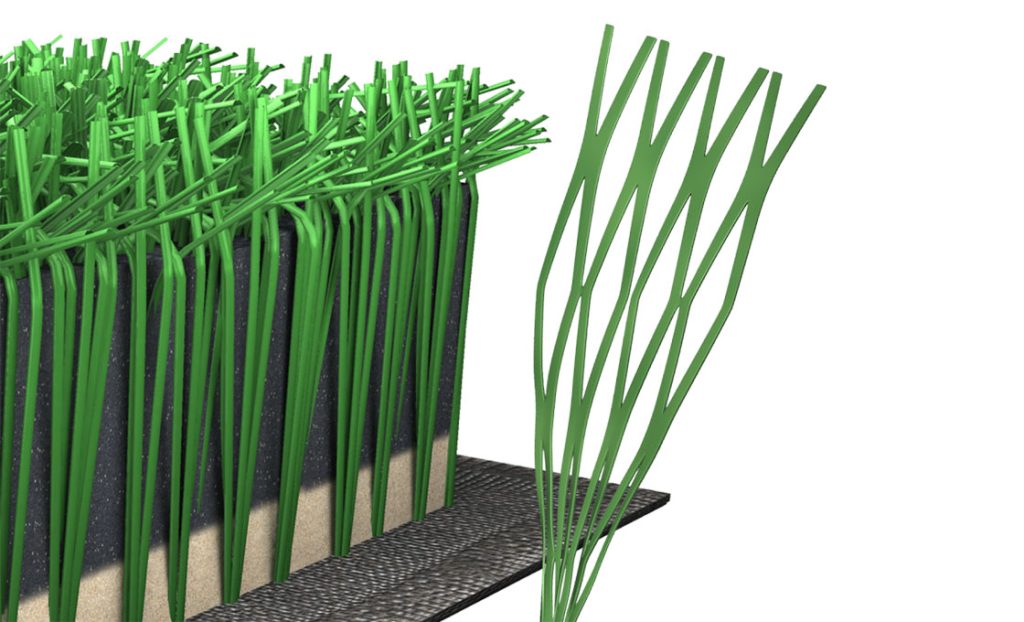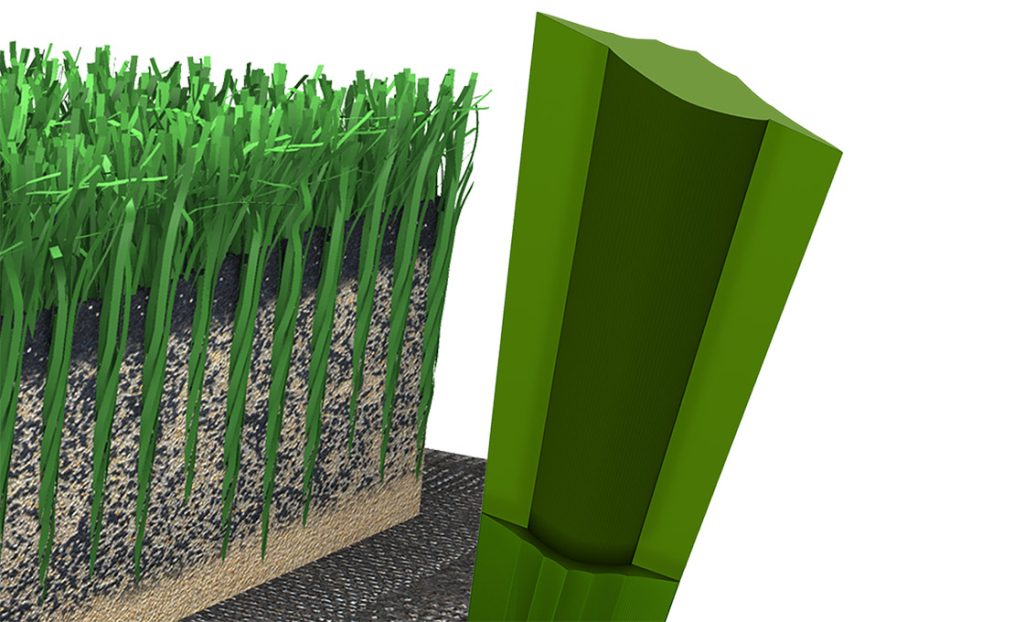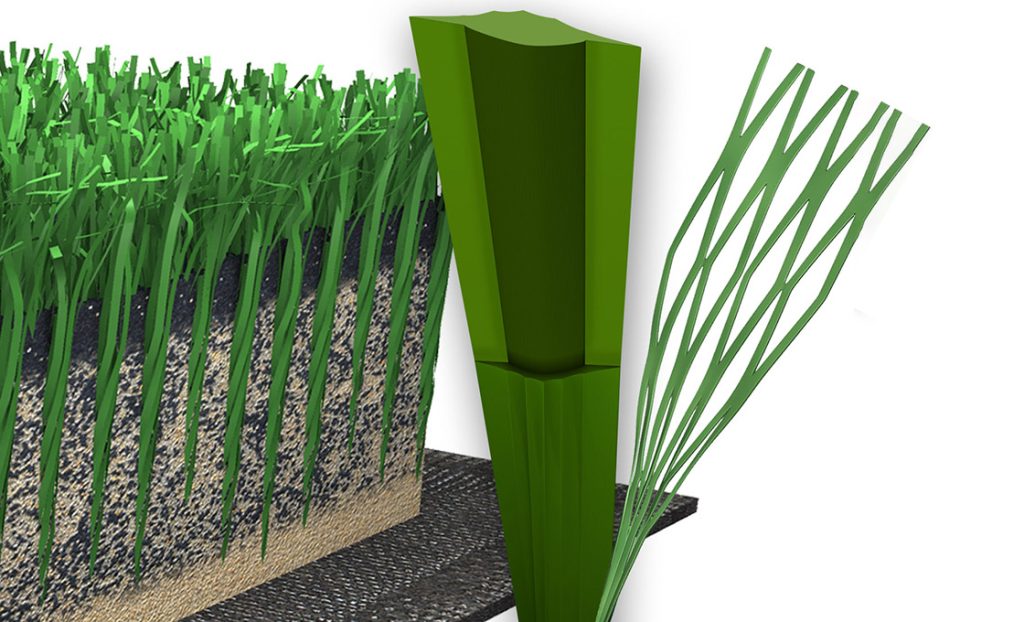
lit Film vs Monofilament vs Dual Fiber: What’s the Difference?
In the expanding world of artificial grass, choosing the right type of turf is critical for achieving optimal performance and aesthetics. The three most common turf types—Slit Film, Monofilament, and Dual Fiber—each serve distinct purposes, offering unique advantages depending on the intended use. Whether you’re building a high-impact sports field, designing a commercial landscape, or upgrading a residential lawn, understanding these differences will help you make an informed decision.
Detailed Comparison of Turf Types

Slit Film Turf
Description and Features
Slit Film turf is crafted using yarns that are sliced into thin, narrow strips. These strips split further with use, creating a netted texture that enhances durability. This turf type is engineered for resilience and longevity, making it the go-to choice for areas that endure heavy foot traffic, such as athletic fields and stadiums.
Advantages and Best Use Cases
- Exceptional wear resistance
- Minimal maintenance requirements
- Ideal for sports like football, soccer, and rugby
- Perfect for high-traffic zones like training centers and public parks
Examples of Stadiums Using Slit Film Turf
Prominent venues such as MetLife Stadium, Lucas Oil Stadium, Ford Field (previously), Paycor Stadium, and U.S. Bank Stadium have utilized Slit Film turf due to its high durability. However, some NFL teams, including the Detroit Lions, have recently moved away from Slit Film in favor of more natural-feeling alternatives, responding to concerns over player safety and surface aesthetics.
Monofilament Turf

Description and Features
Monofilament turf is designed to closely replicate the look and texture of natural grass. Each blade is individually extruded, producing a soft, lifelike surface with excellent visual appeal. The structure allows the blades to remain upright longer, enhancing playability and comfort.
Advantages and Best Use Cases
- High visual realism
- Softer and more comfortable underfoot
- Reduces abrasions and skin injuries
- Excellent for landscaping, playgrounds, golf putting greens, and less intense sports
Examples of Stadiums Using Monofilament Turf
After replacing Slit Film, Ford Field now features Monofilament FieldTurf, which provides a more grass-like experience. Likewise, MetLife Stadium has implemented FieldTurf CORE, a premium Monofilament system, reflecting a growing trend toward safer, more comfortable playing surfaces in professional sports.
Dual Fiber Turf

Description and Features
Dual Fiber, also known as Hybrid Fiber Turf, integrates both Slit Film and Monofilament blades into a single turf system. This hybrid construction combines the toughness of Slit Film with the natural appearance and feel of Monofilament, offering a balanced solution for diverse applications.
Advantages and Best Use Cases
- Strong durability with improved aesthetics
- Suitable for multipurpose sports fields
- Ideal for community centers, educational facilities, and hybrid-use stadiums
- Great for installations that demand both resilience and curb appeal
Examples of Stadiums Using Dual Fiber Turf
At the Singapore National Stadium, Dual Fiber turf has been used to build a cutting-edge hybrid pitch combining natural grass with synthetic reinforcement. This design strengthens the turf for high-traffic events like soccer, rugby, and cricket. Additionally, SIS Pitches has utilized this technology in international cricket fields, reinforcing the value of hybrid solutions in multi-sport environments.
Performance and Durability Comparison
| Turf Type | Durability | Best for High-Impact Sports | Aesthetic Appeal | Comfort & Feel |
|---|---|---|---|---|
| Slit Film | Very High | ✅ | Low | Less Comfortable |
| Monofilament | Moderate | ❌ | Very High | Very Comfortable |
| Dual Fiber | High | ✅ (slightly less than Slit Film) | High | Balanced |
Aesthetic and Functional Considerations
Slit Film Turf
- Look: More uniform, less realistic
- Functionality: Prioritizes durability over aesthetics
- Ideal For: Football fields, rugby pitches, municipal athletic complexes
Monofilament Turf
- Look: Closely resembles natural grass
- Functionality: Great comfort but lower resistance to heavy use
- Ideal For: Homes, schools, decorative lawns, non-contact sports
Dual Fiber Turf
- Look: Balanced between realism and uniformity
- Functionality: Combines strength with comfort
- Ideal For: Stadiums, recreational fields, commercial installations
Conclusion: Choose the Best Turf for Your Project
Since 2006, Roen has been a trusted innovator in the artificial grass industry, delivering premium turf solutions tailored to every environment. Whether you’re seeking the heavy-duty strength of Slit Film, the soft realism of Monofilament, or the balanced performance of Dual Fiber, Roen provides cutting-edge products at factory-direct pricing.
Our artificial turf is engineered with durability, safety, and appearance in mind—perfect for sports facilities, landscaping, public spaces, and more. With Roen, you don’t have to choose between quality and affordability—you get both.
Contact us today to explore our range of professional turf solutions and discover why thousands of clients worldwide trust Roen for their artificial grass needs.
